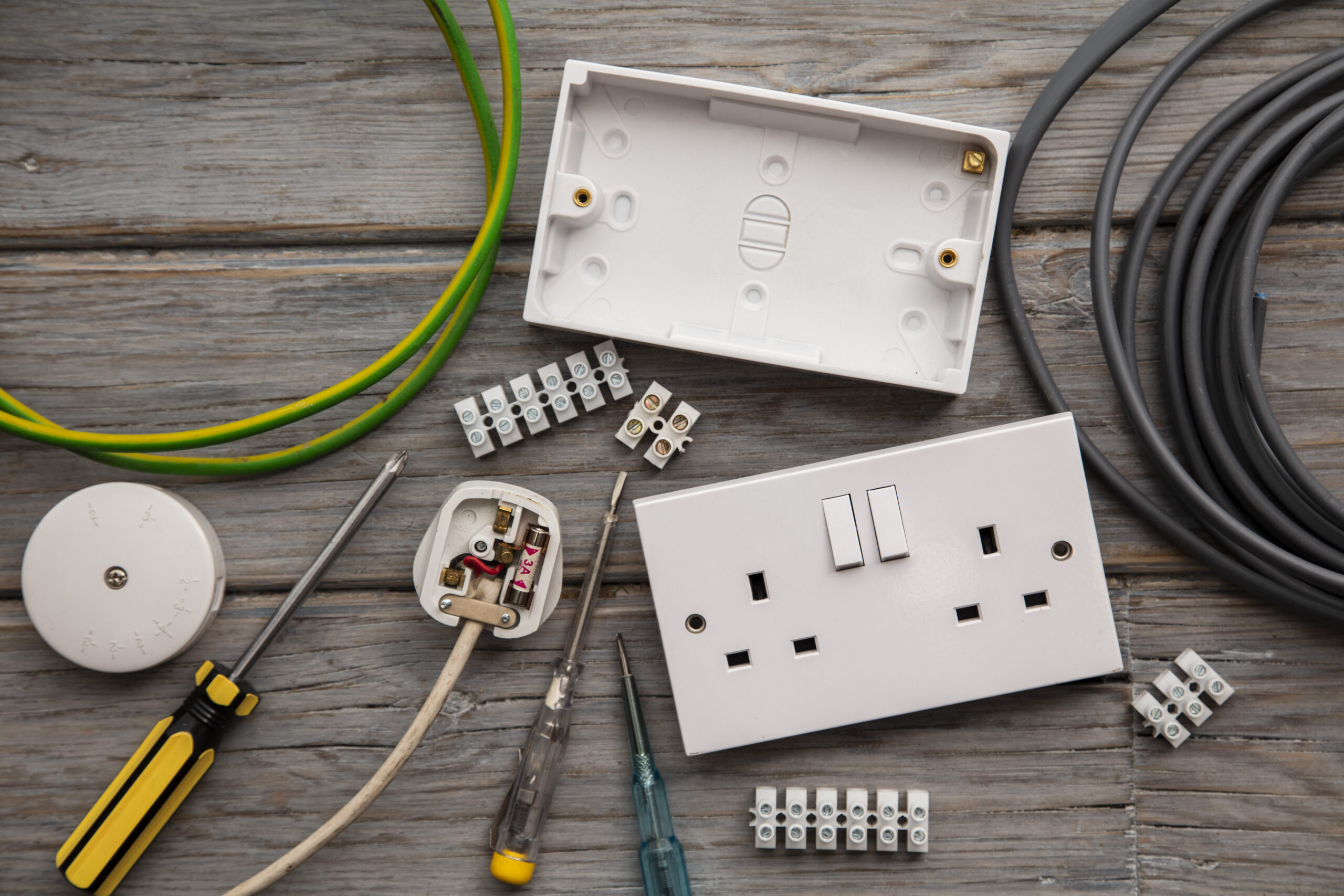Being a Landlord can be a most financially rewarding experience. Investing in a property to provide income now and a potential nest egg for the future is a very sensible thing to do. It does not, however, come without its obligations and responsibilities and every Landlord should make sure they fully understand their position. In this article we aim to shed some light on the legal requirements for Landlords to keep a rental property electrically safe.

At its core the law requires a Landlord to ensure that the electrical installation – this includes fixed wiring such as consumer units and plug sockets as well as appliances supplied by the Landlord such as ovens or fridges – in a rented property is in safe condition prior to a tenant moving in and to ensure it is kept in a safe condition throughout the tenancy.
There are slight differences in the requirements between single occupation tenancies and houses in multiple occupation, which is defined as:
- At least 3 tenants living there forming more than 1 household, which is defined as a single person or family who live together.
- Toilet, bathroom or kitchen facilities are shared
Electrical Safety for Single Occupancy Tenancies
Fixed electrics: For plug sockets, fixed wiring and consumer units the Landlord is required to keep them in a safe condition. There is not, however, any requirement to have the fixed electrics professionally inspected. It is sufficient, under the law, that they carry out regular visual checks on the property to ensure that the installation is safe. It is best practice, but not a legal requirement, for this to be carried out by professional accredited electrician and that the Landlord request an electrical condition report from the electrician at the same interval as for HMOs (see below). If, however, a Landlord decides to carry out the visual inspections personally then the following should be checked:
- Consumer unit is in good condition and the electrics are protected using RCDs
- RCDs are not damaged or being interfered with
- Plug sockets are in a sound condition with no signs of scorching or other damage
- Check with the tenant to ensure the RCDs are not tripping regularly as this could be a sign of some issues
- No wires are exposed from any fixed socket
- Switches are in a sound condition
- Switch and socket screws are not loose
Portable electrics: These are any appliances supplied by the Landlord which can be plugged in or unplugged and moved and can cover everything from a toaster to a fridge freezer, washing machine and cooker.
Once again, the law does not specify how to do this and a regular visual inspection is acceptable. Best practice, however, is to have a “Competent Person” carry out a PAT test on the items.
If a visual inspection is carried out, then the following should be looked at and anything which looks suspicious should be replaced or properly repaired:
- fraying, cuts or heavy scuffing to the lead
- damage to the plug such as bent pins
- tape applied to the lead to join leads together
- visible wires where the lead joins the plug
- loose parts or screws
- signs of overheating, such as burn marks or staining on the plug
- equipment being stored in dusty or wet environments
- cables trapped under furniture or in floor boxes
- ensure the item is CE marked
One thing to note is that the government is considering plans to tighten up the inspection requirements for single occupancy lets, so it makes sense for Landlords to follow the best practice guidelines to ensure that they don’t get caught out by any future changes in legislation.
Houses in Multiple Occupancy
The law is slightly more stringent on HMOs and it is a legal requirement that a periodic inspection is carried out every 5 years by a competent person on the electrics in the property. This will require a suitably qualified electrician to carry out a full inspection on the property and produce an electrical condition report. This inspection will:
- Reveal if any of your electrical circuits or equipment are overloaded.
- Find any potential electric shock risks and fire hazards.
- Identify any defective electrical work.
- Highlight any lack of earthing or bonding.
Tests are also carried out on wiring and fixed electrical equipment to check that they are safe. A schedule of circuits should also be provided.
As a Landlord, it makes sense to protect your investment no matter what, but the law puts an additional incentive to comply as, if a Landlord does not properly check and maintain the electrics in a rental property they could be fined and banned from having rental properties. If you require further information about your obligations as a Landlord, then check out our handy Step by Step Guide to Letting for assistance managing this or any other element of your property portfolio contact one of our local property experts.






